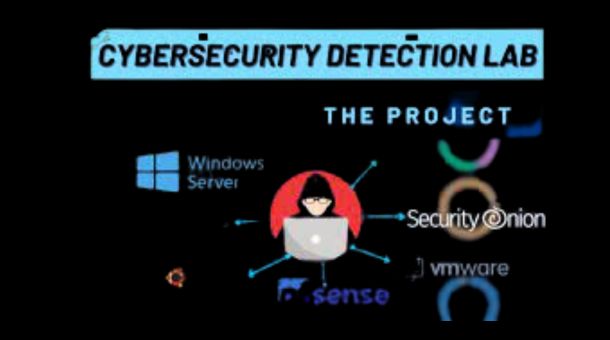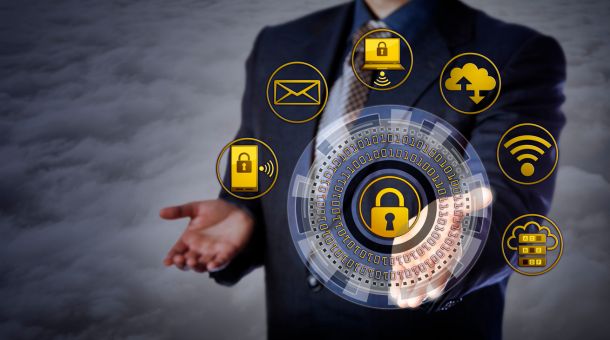In today’s digital age, cybersecurity has become a critical concern for individuals and organizations. As the number of cyber threats continues to rise, taking proactive measures to protect your digital assets is essential.
One way to enhance your cybersecurity knowledge and skills is by setting up a home cybersecurity lab. In this article, we will explore the benefits of building a home cybersecurity lab and provide step-by-step guidance on creating one.
We will also cover the equipment and software required, best practices for running and securing your lab, and offer project ideas to help you practice your skills.
What is a Home Cybersecurity Lab?
A home cybersecurity lab is a dedicated environment for individuals to learn and practice various cybersecurity techniques and tools. A simulated network environment allows users to perform hands-on exercises to understand and mitigate potential cybersecurity threats. It typically consists of multiple computers, virtual machines, and network devices connected to simulate a real-world network environment.
By setting up a home cybersecurity lab, individuals can improve their cybersecurity skills and knowledge, stay up-to-date with the latest cybersecurity trends and threats, and test their security measures in a safe and controlled environment.
Why Should You Build a Home Cybersecurity Lab?

There are several reasons why you should consider building a home cybersecurity lab, including:
Hands-on learning:
A home cybersecurity lab provides a hands-on learning experience that can be difficult to replicate in a traditional classroom setting. By building and configuring your network, you can learn how different components work together and better understand cybersecurity concepts.
Practice cybersecurity skills:
With a home cybersecurity lab, you can practice different cybersecurity techniques and tools without damaging systems. This allows you to experiment and learn in a safe environment.
Stay up-to-date with cybersecurity trends:
Cybersecurity is a rapidly evolving field, and staying up-to-date with the latest trends and threats is critical. Building a home cybersecurity lab allows you to test and experiment with new tools and techniques as they emerge.
Career development:
If you’re interested in a career in cybersecurity, a home lab can provide a valuable asset to your resume. Employers often look for candidates with hands-on experience in cybersecurity, and a home lab can demonstrate your practical skills and knowledge.
Protect your home network:
A home cybersecurity lab can also be used to test and improve the security of your home network. You can better protect your personal devices and data from cyber threats by identifying vulnerabilities and implementing security measures in your lab.
How to Set Up a Home Cybersecurity Lab?

Setting up a home cybersecurity lab requires a few basic steps. Here’s an overview of the process:
Define your goals:
Before setting up your lab, defining your goals and what you want to achieve is essential. This will help you determine the equipment and software you’ll need and the type of network topology you’ll use.
Choose your equipment:
You’ll need several pieces to set up a home cybersecurity lab, including multiple computers or virtual machines, a router or switch, and network cables. You may also need additional hardware, such as USB Wi-Fi adapters or Ethernet cables.
Install virtualization software:
Virtualization software allows you to run multiple operating systems on a single physical computer. You’ll need to install virtualization software such as VirtualBox, VMware, or Hyper-V to create virtual machines for your lab.
Set up a network:
You’ll need to set up a network for your lab to simulate a real-world environment. This involves configuring IP addresses, subnet masks, and default gateways for each virtual machine or physical computer. You’ll also need to configure your router or switch to connect the devices.
Install cybersecurity software:
To practice different cybersecurity techniques and tools, you must install various cybersecurity software on your virtual machines or physical computers. This may include antivirus software, network sniffers, intrusion detection systems, and vulnerability scanners.
Test your lab:
Once it is set up, you should test it to ensure everything is working correctly. You can do this by attempting to hack into your lab or simulating various cyber-attacks to test your security measures.
Following these steps, you can set up a home cybersecurity lab that provides a safe and controlled environment to practice cybersecurity skills and test security measures.
How Much Does it Cost to Build a Home Cybersecurity Lab?
The cost of building a home cybersecurity lab can vary widely depending on the equipment and tools you use. Here’s an estimate of the cost of building a basic home cybersecurity lab:
Computers or Virtual Machines (VMs): You’ll need at least two computers or VMs to create a network environment for your lab. You can use physical computers or create virtual machines using virtualization software like VirtualBox, VMware, or Hyper-V.
The cost of computers or VMs can vary depending on your hardware requirements, but you can expect to spend around $500 – $1,500 for each computer or VM.
- You’ll need a router or switch to connect the computers or VMs in your network. You can use a physical router or switch or create a virtual network using software-defined networking (SDN) tools like Open vSwitch. A basic router or switch can range from $50 to $200.
- You’ll need Ethernet cables to connect the computers or VMs to the router or switch. The cost of network cables can range from $10 – $50, depending on the length and quality.
- To test wireless security, you’ll need USB Wi-Fi adapters to create wireless connections for your lab. USB Wi-Fi adapters can range from $20 – $50.
- Virtualization software like VirtualBox, VMware, or Hyper-V is free to download and use.
- You must install operating systems on your virtual or physical computers. You can use popular operating systems like Windows, Linux, and macOS, which can be downloaded for free.
- To practice different cybersecurity techniques and tools, you must install various cybersecurity software on your virtual machines or physical computers. This may include antivirus software, network sniffers, intrusion detection systems, and vulnerability scanners. Some cybersecurity tools are free, while others may require a subscription or license. The cost of cybersecurity tools can range from $0 – $1,000 or more.
Overall, the cost of building a basic home cybersecurity lab can range from $600 – $3,000 or more, depending on your chosen equipment and tools.
How to Secure Your Home Cybersecurity Lab?
When setting up a home cybersecurity lab, it’s essential to ensure it’s secure to prevent unauthorized access or cyberattacks. Here are some tips to help you secure your home cybersecurity lab:
- Use strong and unique passwords for all your lab devices, including routers, switches, and virtual machines. Don’t use the same password for multiple devices, and consider using a password manager to generate and store passwords securely.
- Keep all your lab software, including operating systems and cybersecurity tools, updated with the latest security patches and updates.
- A firewall restricts incoming and outgoing traffic to your lab devices. Configure your router or switch to WPA2 encryption for Wi-Fi connections, and change the default login credentials.
- Use a virtual private network (VPN) to encrypt your lab traffic and prevent unauthorized access or eavesdropping.
- Disable any unnecessary services or protocols on your lab devices that attackers could exploit.
- Limit Physical Access: Keep your lab devices in a secure location, and limit physical access to authorized users only.
- Install antivirus and anti-malware software on your lab devices to protect against malware and other cyber threats.
- Follow safe computing practices like not clicking on suspicious links, not downloading unknown files, and not opening emails or attachments from unknown sources.
By implementing these security measures, you can help ensure your home cybersecurity lab is secure and protected from cyber threats.
What Are Some Home Cybersecurity Lab Projects You Can Try?

There are many home cybersecurity lab projects that you can try to improve your skills and knowledge in the cybersecurity field. Here are some ideas:
Setting up a Penetration Testing Lab:
- Create a penetration testing lab to practice ethical hacking and security testing on your lab devices.
- Network Analysis and Monitoring:
- Set up a network monitoring lab to learn how to analyze and monitor network traffic, detect anomalies, and prevent cyber attacks.
Malware Analysis:
- Please set up a malware analysis lab to learn how to analyze malware and understand its behaviour.
- Web Application Security: Set up a web application security lab to learn how to identify and prevent common web application vulnerabilities like SQL injection, cross-site scripting, and CSRF attacks.
- Wireless Network Security: Set up a wireless network security lab to learn how to secure networks, detect rogue access points, and perform penetration testing.
- IoT Security: Set up an Internet of Things (IoT) security lab to learn how to secure IoT devices, analyze IoT traffic, and detect IoT-related cyber attacks.
- Cyber Threat Intelligence: Set up a cyber threat intelligence lab to learn how to gather, analyze, and respond to cyber threats in real time.
By trying out these cybersecurity lab projects, you can gain practical experience in various areas of cybersecurity and develop your skills and knowledge.
What Skills Do You Need to Build and Run a Home Cybersecurity Lab?
Here are some of the skills you may need to build and run a home cybersecurity lab:
- Networking Skills
- Operating System Knowledge
- Virtualization Skills
- Scripting and Programming Skills
- Cybersecurity Fundamentals and Best Practices
- Analytical and Problem-Solving Skills
- Research and Learning Skills
- Communication and Collaboration Skills
What Are Some Challenges You May Face When Building a Home Cybersecurity Lab?
Building a home cybersecurity lab can be challenging, and you may encounter various obstacles along the way. Here are some of the challenges you may face when building a home cybersecurity lab:
- Cost
- Technical Knowledge
- Security Risks
- Compatibility Issues
- Space and Power Constraints
- Time and Maintenance
You can successfully build and run a home cybersecurity lab by being aware of these challenges and developing a plan to overcome them.
Conclusion
building a home cybersecurity lab can be a valuable investment for those interested in cybersecurity. It provides a safe and controlled environment to practice and test various security tools and techniques. With the right equipment, tools, and skills, you can build a home cybersecurity lab that suits your needs and allows you to gain practical experience and knowledge in various areas of cybersecurity.
However, building and running a home cybersecurity lab has challenges like cost, technical knowledge, security risks, compatibility issues, space and power constraints, and time and maintenance. You can build and run a successful home cybersecurity lab by being aware of these challenges and developing a plan to overcome them.


